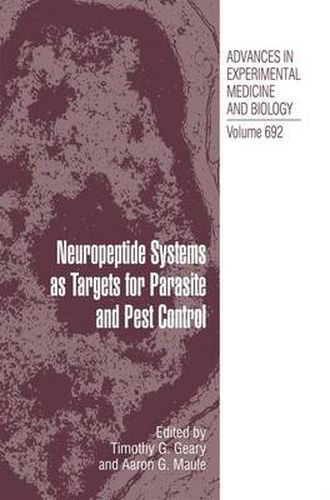Readings Newsletter
Become a Readings Member to make your shopping experience even easier.
Sign in or sign up for free!
You’re not far away from qualifying for FREE standard shipping within Australia
You’ve qualified for FREE standard shipping within Australia
The cart is loading…






This title is printed to order. This book may have been self-published. If so, we cannot guarantee the quality of the content. In the main most books will have gone through the editing process however some may not. We therefore suggest that you be aware of this before ordering this book. If in doubt check either the author or publisher’s details as we are unable to accept any returns unless they are faulty. Please contact us if you have any questions.
The need to continually discover new agents for the control or treatment of invertebrate pests and pathogens is undeniable. Agriculture, both animal and plant, succeeds only to the extent that arthropod and helminth consumers, vectors and pathogens can be kept at bay. Humans and their companion animals are also plagued by invertebrate parasites. The deployment of chemical agents for these purposes inevitably elicits the selection of resistant populations of the targets of control, necessitating a regular introduction of new kinds of molecules. Experience in other areas of chemotherapy has shown that a thorough understanding of the biology of disease is an essential platform upon which to build a discovery program. Unfortunately, investment of research resources into understanding the basic physiology of invertebrates as a strategy to illuminate new molecular targets for pesticide and parasiticide discovery has been scarce, and the pace of introduction of new molecules for these indications has been slowed as a result. An exciting and so far unexploited area to explore in this regard is invertebrate neuropeptide physiology. This book was assembled to focus attention on this promising field by compiling a comprehensive review of recent research on neuropeptides in arthropods and helminths, with contributions from many of the leading laboratories working on these systems.
$9.00 standard shipping within Australia
FREE standard shipping within Australia for orders over $100.00
Express & International shipping calculated at checkout
This title is printed to order. This book may have been self-published. If so, we cannot guarantee the quality of the content. In the main most books will have gone through the editing process however some may not. We therefore suggest that you be aware of this before ordering this book. If in doubt check either the author or publisher’s details as we are unable to accept any returns unless they are faulty. Please contact us if you have any questions.
The need to continually discover new agents for the control or treatment of invertebrate pests and pathogens is undeniable. Agriculture, both animal and plant, succeeds only to the extent that arthropod and helminth consumers, vectors and pathogens can be kept at bay. Humans and their companion animals are also plagued by invertebrate parasites. The deployment of chemical agents for these purposes inevitably elicits the selection of resistant populations of the targets of control, necessitating a regular introduction of new kinds of molecules. Experience in other areas of chemotherapy has shown that a thorough understanding of the biology of disease is an essential platform upon which to build a discovery program. Unfortunately, investment of research resources into understanding the basic physiology of invertebrates as a strategy to illuminate new molecular targets for pesticide and parasiticide discovery has been scarce, and the pace of introduction of new molecules for these indications has been slowed as a result. An exciting and so far unexploited area to explore in this regard is invertebrate neuropeptide physiology. This book was assembled to focus attention on this promising field by compiling a comprehensive review of recent research on neuropeptides in arthropods and helminths, with contributions from many of the leading laboratories working on these systems.